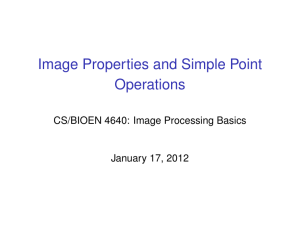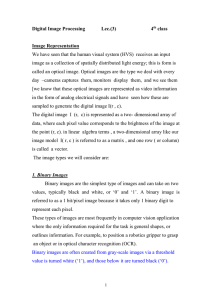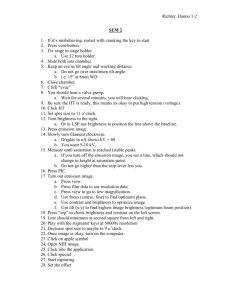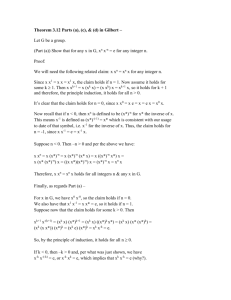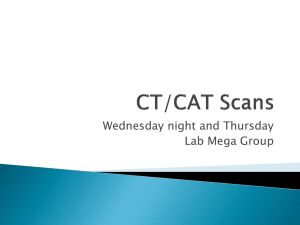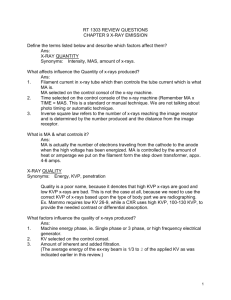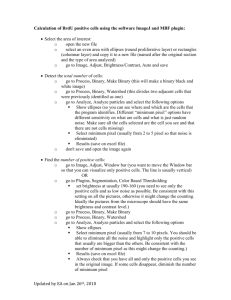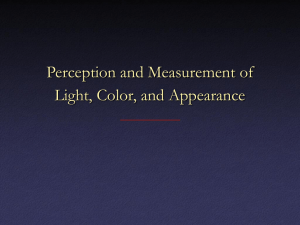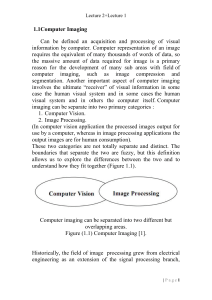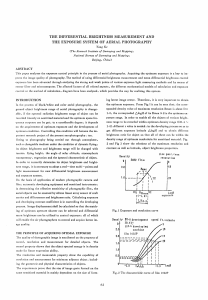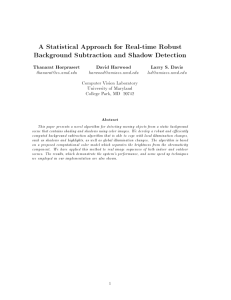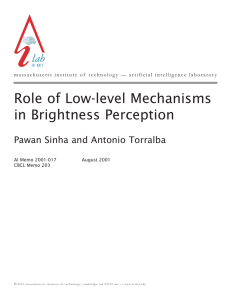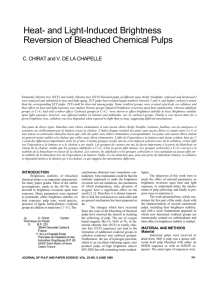hw#1 - Personal.psu.edu
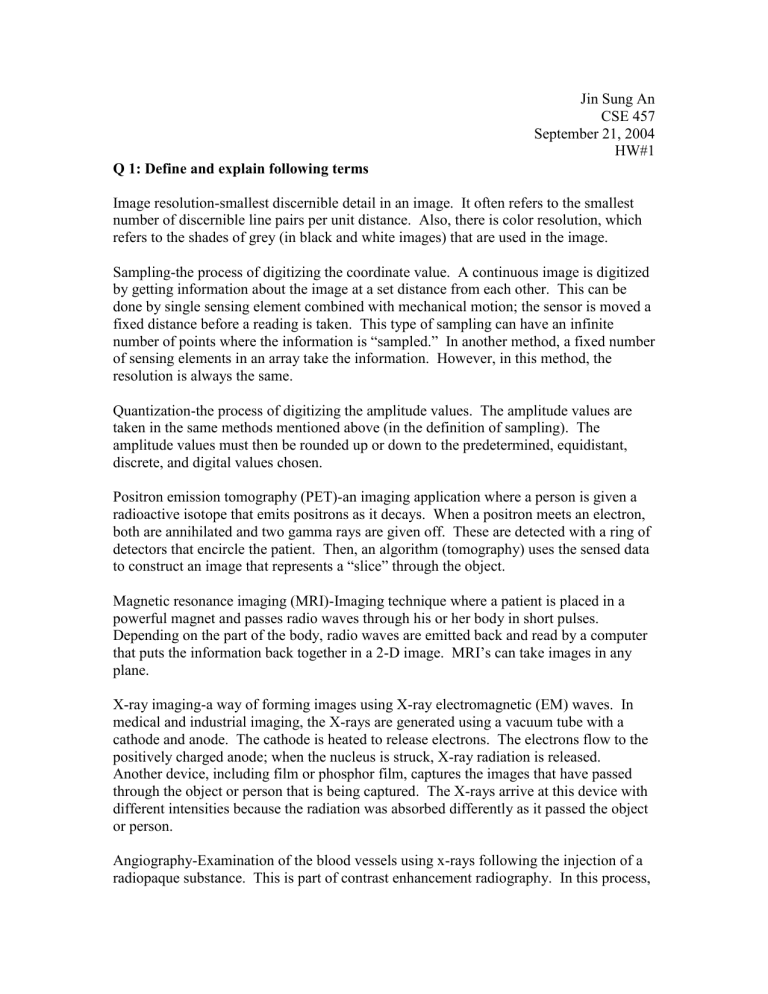
Jin Sung An
CSE 457
September 21, 2004
HW#1
Q 1: Define and explain following terms
Image resolution-smallest discernible detail in an image. It often refers to the smallest number of discernible line pairs per unit distance. Also, there is color resolution, which refers to the shades of grey (in black and white images) that are used in the image.
Sampling-the process of digitizing the coordinate value. A continuous image is digitized by getting information about the image at a set distance from each other. This can be done by single sensing element combined with mechanical motion; the sensor is moved a fixed distance before a reading is taken. This type of sampling can have an infinite number of points where the information is “sampled.” In another method, a fixed number of sensing elements in an array take the information. However, in this method, the resolution is always the same.
Quantization-the process of digitizing the amplitude values. The amplitude values are taken in the same methods mentioned above (in the definition of sampling). The amplitude values must then be rounded up or down to the predetermined, equidistant, discrete, and digital values chosen.
Positron emission tomography (PET)-an imaging application where a person is given a radioactive isotope that emits positrons as it decays. When a positron meets an electron, both are annihilated and two gamma rays are given off. These are detected with a ring of detectors that encircle the patient. Then, an algorithm (tomography) uses the sensed data to construct an image that represents a “slice” through the object.
Magnetic resonance imaging (MRI)-Imaging technique where a patient is placed in a powerful magnet and passes radio waves through his or her body in short pulses.
Depending on the part of the body, radio waves are emitted back and read by a computer that puts the information back together in a 2-D image. MRI’s can take images in any plane.
X-ray imaging-a way of forming images using X-ray electromagnetic (EM) waves. In medical and industrial imaging, the X-rays are generated using a vacuum tube with a cathode and anode. The cathode is heated to release electrons. The electrons flow to the positively charged anode; when the nucleus is struck, X-ray radiation is released.
Another device, including film or phosphor film, captures the images that have passed through the object or person that is being captured. The X-rays arrive at this device with different intensities because the radiation was absorbed differently as it passed the object or person.
Angiography-Examination of the blood vessels using x-rays following the injection of a radiopaque substance. This is part of contrast enhancement radiography. In this process,
a catheter is used to inject an X-ray contrast medium into an artery or vein. This enhances the contrast of the blood vessels and enables the radiologist to see more details.
Mach band effect-a phenomena stating that perceived brightness is not a simple function of intensity. The visual system tends to undershoot or overshoot around the boundary of regions of different intensities.
Conditional contrast-also known as simultaneous contrast, is refers to the phenomena that apparent brightness of object depends on brightness of local background. For example, if an object (with same brightness) is put in front of varying shades of grey, the object will seem different brightness.
Image distortion-image distortion occurs when the digital image does not produce a good reproduction of the original image. This may occur for numerous reasons. In particular, the resolution may play a big role. When an image is sampled and quantized in a small resolution (100x100), then it is re-encoded and displayed much larger (1000x1000), there won’t be enough information to properly display the original image.
Neighborhood connectivity-Each pixels has 4 vertical and horizontal neighbors. These are the pixels directly on top and left and right of the said pixel. Moreover, each pixel has four diagonal neighbors. If the pixel we are concerned about is in (x,y) then the neighbors are:
(x+1,y),(x-1,y),(x,y+1),(x,y-1)
The diagonal neighbors are:
(x+1,y+1),(x+1,y-1),(x-1,y+1),(x-1,y-1)
The connectivity depends if they are neighbors. Additionally, a specified criterion of similarity must be satisfied.
Q2: Solve the following problems from your textbook (pages 71-73): 2.3, 2.5, 2.7,2.9 and 2.11
2.3
60 Hz
=c/v
=2.998 x 10
8
m/s / 60 Hz
Hz = 1/s
=2.998 x 10
8
m/s / (60*(1/s))
=4.996 x 10
6
m = 4996 km
2.5
CCD 7x7 mm
1024x1024 elements object 0.5 m away
35 mm lens
7mm/35mm=x/500mm x=100mm
1024/100 = 10.24 elements/mm approximate 10 elements/mm
Therefore, 5 line pairs per milimeter
2.7 x=# of bits used for greyscale
8=(255+1)/2 x x=5
2
5
=32
32 greyscales or less will produce visible false contouring
2.9
(a)
(1024)
2 x (10+2) bits = 10485760 bits
10485760 bits / 56k = 187.25 seconds
(b)
10485760 / 750k = 13.981 seconds
2.11
(a) NO
(b) YES
(c) YES
